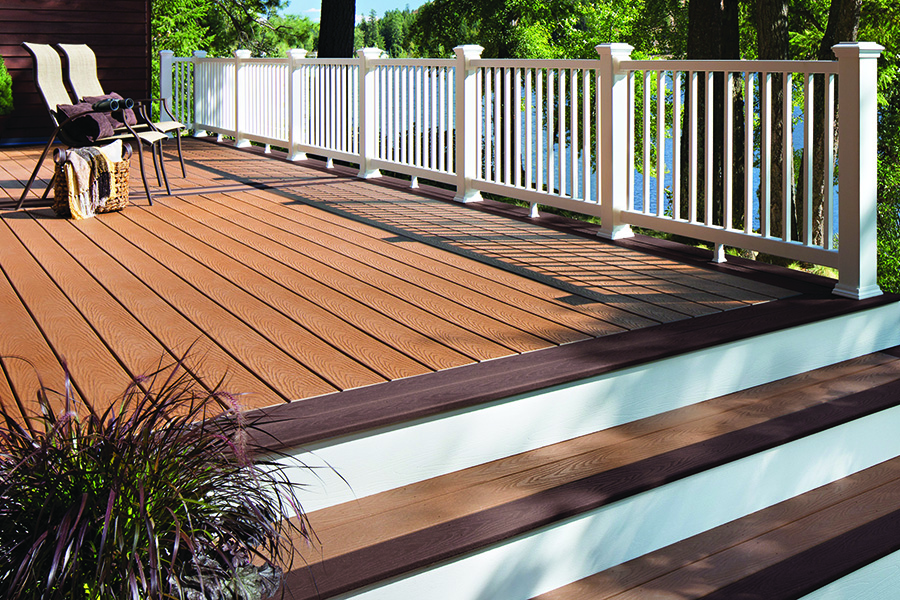Aiming for Green
With LEED and its rival green-rating systems firmly established, the number of green-building products is on the rise, with a variety of decking and railing products made from waste or easily renewable materials.
GeoDeck, for example, is made from powdered paper sludge, dried rice hulls, and polyethylene. Terratec Naturals, made by McFarland Cascade, contains rice hulls and high-density polyethylene. Cali Bamboo’s BamDeck consists of 60% reclaimed bamboo fibers. NyloDeck is made from recycled carpet.
These intriguing products make use of materials that are usually discarded, allowing eco-conscious consumers to feel good about using them. And manufacturers can point to specific advantages of some of the materials. GeoDeck says, for instance, that rice hulls are mold resistant.
But, Daingerfield points out, unless the advantages are easy to understand, this new wave of green products may not be in high demand. Costa agrees, adding that while consumers seem interested in green products, their enthusiasm quickly wanes as the price goes up.
“People talk about green,” he says, “and wanting to be green, but nobody wants to pay for it and nobody wants to sacrifice quality for it. Products like that really are going to have a hard road to prove that they are just as good quality-wise and that their pricing can be as good or better as traditional products.”
Builders, he adds, will not be interested in testing products that are new to the marketplace and probably won’t be willing to stake their reputation on a product just because someone calls it “green.”
Fasteners Out of Sight
Most synthetic decking manufacturers sell boards that have grooved edges to accommodate one or more types of hidden fastener. These clip systems automatically space the boards and keep fasteners completely out of sight on a completed deck.
McCarthy says that all of the decking he sells in 2014 will have some kind of clip system (Atlantic doesn’t sell any wood decking), but he adds that there are plenty of builders who continue to face-screw decking or to even nail it in place. They haven’t bought into hidden fasteners and are unlikely to change in the near future.
Costa says that hidden fasteners are used about 50% of the time for synthetic decking and only about 25% of the time on all decking.
Because hidden fastening systems aren’t really new, builders who were likely to transition to them have already done so, he points out, while other builders don’t see the value in switching, either because they see hidden fasteners as more labor intensive and more expensive or because customers aren’t demanding them. As a result, Costa says, hidden fasteners are unlikely to be a hot growth area for 2014.


